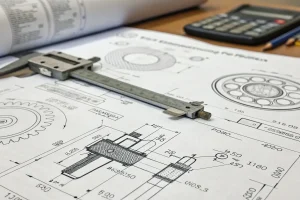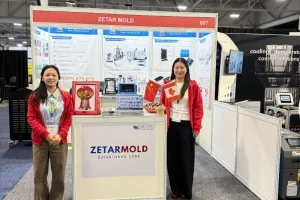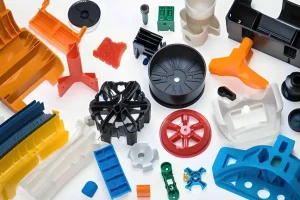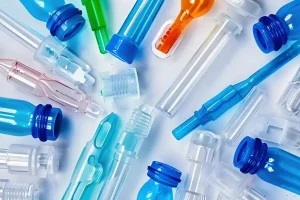Injection molding is a vital technology in automotive manufacturing, offering high precision, cost-efficiency, and scalability for producing complex automotive parts.
Injection molding is used in automotive parts production to create high-quality, durable components. Benefits include rapid production, cost reduction, and consistency. It is ideal for producing plastic, metal, and composite parts for various vehicle models.
Understanding the advantages and potential limitations of injection molding in automotive production is key to optimizing part design and minimizing costs. Delve deeper to explore how this technology can enhance your manufacturing operations.
Injection molding improves the efficiency of automotive parts production.True
Injection molding enables high-speed production of automotive parts with reduced labor and material waste.
Injection molding is the best option for all automotive parts.False
While injection molding is suitable for many automotive parts, other methods like die casting or stamping may be better for specific metal parts or complex geometries.
What are the Materials for Automotive Injection Molding?
Automotive injection molding requires materials that offer strength, durability, and resistance to heat and chemicals. Key materials include ABS, polycarbonate, and nylon.
Automotive injection molding uses materials like ABS, polycarbonate, and nylon due to their high strength, durability, and resistance to heat and impact. These materials help create complex, reliable automotive components.

Polypropylene (PP)
Polypropylene is a polymer of propylene and is one of the common materials used to make car parts. It is used to make exterior parts of cars, such as bumpers, because it is resistant to chemicals, UV rays, and water.
Polypropylene1 is a semi-crystalline, tough, high-performance plastic polymer. It has excellent chemical and heat resistance and is highly moldable, making it ideal for products with intricate designs. Additionally, PP’s chemical and heat resistance make it perfect for automotive parts.
Polyurethane (PUR)
Polyurethane2 is another high-performance plastic polymer made by adding polyurethane. Its many forms make it a versatile automotive plastic suitable for both complex and simple automotive parts.So, polyurethane is a common plastic polymer used in plastic manufacturing processes for automotive parts, like injection molding.
Polyurethane is versatile and suitable for industry because it insulates, is strong, elastic, and plastic. So, it’s good for making noise and heat shielding parts for car engines and parts in the car body that need strength. Auto parts made of the polymer are headrests, sound insulation and air filtration systems, bumpers, suspension insulators, tires.
Polyvinyl Chloride (PVC or Vinyl)3
PVC makes up about 16% of the plastic components in cars. Because it’s flexible and can handle heat, car part makers use it to make all sorts of parts with different hardnesses, like inside panels and dashboard parts.
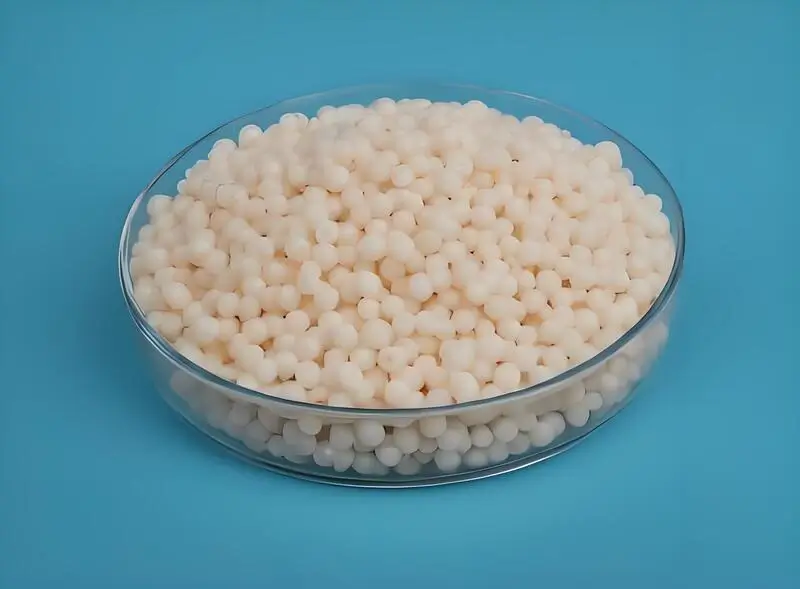
PVC is a common plastic that is widely used in the automotive industry because it is resistant to water and chemicals, cheap, tough, durable, and brittle.
PVC is the third most popular synthetic plastic polymer in the world. In the automotive industry, it’s used for many molded parts that need good chemical resistance. These include interior panels, dashboards, and cable insulation.
Acrylonitrile-Butadiene-Styrene (ABS)
ABS is a high-performance car plastic and amorphous polymer made of three monomers: acrylonitrile, butadiene, and styrene, and is injection molded using ABS.The physical and mechanical properties of ABS are determined by its monomer units.
However, ABS is strong and durable and has good electrical insulation properties. ABS can be dyed, which makes it more aesthetically pleasing. Therefore, it is suitable for manufacturing components such as dashboards, body parts, wheel covers, etc.
Polyamide (PA/Nylon 6/6, Nylon 6)
Nylon is used a lot in the automotive parts industry because it’s strong. It’s got good abrasion resistance and good thermal stability. But it’s got some bad things about it too. It’s got a lot of water absorption. But you can add things to it to make it better. For example, you can add glass fiber to automotive plastics to make it not absorb water.

It is a high-performance engineering plastic that is suitable for heavy-duty applications that are required for automotive parts manufacturing. Common parts and components such as hoods, door handles, gearboxes, fuel tank caps, and covers are made from the polymer.
Polystyrene (PS)
Polystyrene is a clear plastic that comes in solid and foam forms. It doesn’t dissolve in water, can handle heat and chemicals, and looks good.Most of the applications of polystyrene in the automotive parts industry are for displays and panels. Common ones are automotive interiors, knobs, automotive accessories, door panels, sound insulation sponges, and display bases.
Polyethylene (PE)
Polyethylene is a special plastic because it is durable, cheap, and resistant to chemicals and germs. But it is very important in making car parts because it is durable, light, and resistant to chemicals. PE is good for making plastic gas tanks and fiberglass bodies.
Polyoxymethylene (POM)
POM is a semi-crystalline plastic that keeps its shape in different environments and temperatures. It’s also stiff, resistant to chemicals and UV rays, and looks smooth. POM is good for making car parts that need to be precise and resist fuel, chemicals, and cold. So, it’s good for inside and outside car parts and fuel system parts.
Polycarbonate (PC)
Poly is a plastic that’s clear and tough. It’s hard, tough, durable, strong and tough. Plus, it’s clear.
Poly can be easily shaped, molded and made. It’s good for making bumpers, bulletproof glass and headlights.

Acrylic (PMMA)
Acrylic is a more stable automotive plastic that is resistant to UV radiation and has excellent optical transparency. So, it’s a great alternative to glass.
Also, Acrylic is cheap, easy to find, and a good alternative to polycarbonate and other plastic polymers when you don’t need something super strong. Acrylic is good for making things like car tops, headlight covers, motorcycle windshields, and so on.
ABS is commonly used for automotive injection molding.True
ABS provides good impact resistance and durability, making it ideal for various automotive applications like interior panels and bumpers.
Polycarbonate is always the best material for automotive molding.False
Polycarbonate is a strong choice for certain applications, but its higher cost and potential for brittleness under certain conditions make it less suitable than other materials in some cases.
What are the Types of Injection Molding Techniques?
Injection molding techniques vary based on the desired material properties, part complexity, and production volume. Key types include standard injection molding, insert molding, and overmolding.
Common injection molding techniques include standard injection molding for high-volume production, insert molding for embedding components, and overmolding for creating multi-material parts. Each technique offers distinct advantages for specific applications and industries.
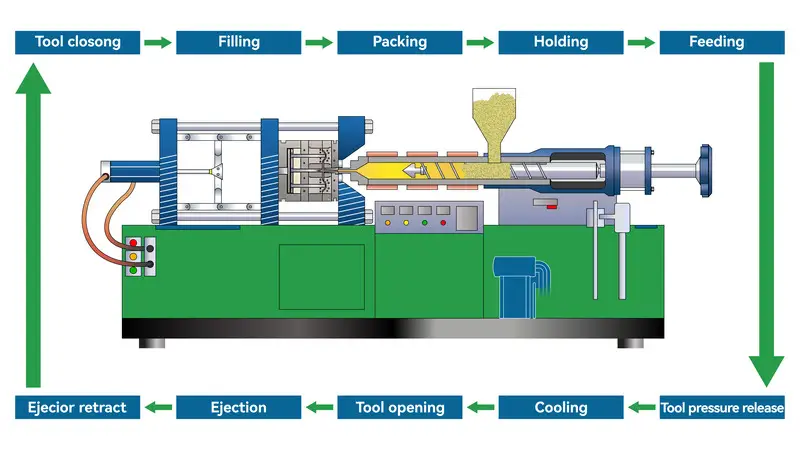
Thermoplastic Injection Molding
Thermoplastic injection molding is the most common type of injection molding used in the automotive industry. It is used to produce parts made from thermoplastic materials such as polypropylene, nylon, and ABS.
This car molding technique has a lot of advantages over other types of injection molding. It’s cheap, it’s fast, and it can do a lot of different things.
Elastomer Injection Molding
Elastomer injection molding is used to make parts from elastomeric materials like rubber and silicone. It has a lot of the same advantages as thermoplastic injection molding4, like low cost, high production speeds, and versatility. Plus, it’s great at absorbing shock and reducing vibration.
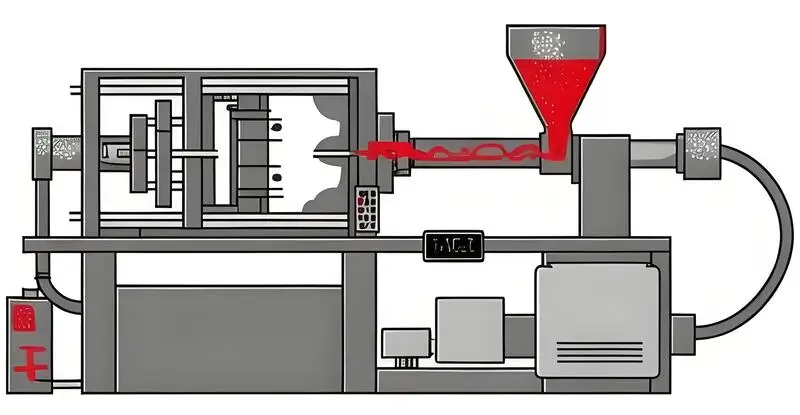
Thermoset Injection Molding
Thermoset injection molding is used to make parts from thermoset materials like epoxies and polyesters. This automotive molding technique has many of the same advantages as thermoplastic molding, including its precise dimensional tolerances and repeatability.
But it also has some advantages over thermoplastic molding. It doesn’t melt or deform easily at high temperatures, which is why automakers choose thermoset injection molding.
Insert molding is ideal for parts requiring embedded components.True
Insert molding combines plastic injection molding with metal or other components, ensuring a secure bond and reducing the need for secondary assembly.
Overmolding is always more expensive than standard injection molding.False
While overmolding generally requires specialized molds, its ability to create multi-material parts can reduce production steps and overall costs, making it cost-effective in certain applications.
What are the Advantages of Injection Molding Process in the Automotive Industry?
Injection molding is a key manufacturing process in the automotive industry, offering precision and cost-effectiveness for producing complex components with high efficiency.
Injection molding in the automotive industry ensures high precision, faster production cycles, and reduced waste. It allows for complex, durable parts with minimal material costs, benefiting manufacturers and consumers alike.

Safety and Comfort
Plastic polymers are safer than other materials used in the manufacture of automotive parts. You can see this in the way they’re used. For example, car bumpers are the most common and are made of plastics with high impact resistance, like ABS, polycarbonate, and polypropylene.
Another case is that it is used in airbags, seat belts, and child restraint seats, which are durable and cushioning products, and are usually made using polymers such as PVB, polyester fibers. Finally, they can also improve comfort, such as blocking UV rays, cushioning effects, and amplifying the sound they make.
Weight Reduction
The weight of parts used in making car parts makes those parts use energy. So, the right material should be light but have the same properties as metals used in making gas and electric cars.

Polypropylene and other plastic polymers are commonly used in cars because they’re hard, tough, and can replace metal. They’re also lightweight, which is great for fuel and electric vehicles because it helps them use less fuel or energy, cost less, and perform better.
Minimal Corrosion Damage
Plastic polymers don’t corrode when they’re around moisture, chemicals, and other things that make them break down. That’s why they last longer than metals.
Right now, plastics like PEEK and polyethylene, which are known for being able to handle the toughest chemicals, are used to make a lot of car parts that have to work in really tough environments.
Reduced Energy Consumption
Because they are lightweight, they can reduce the amount of energy needed to power a vehicle. Also, because it is a fast and less labor-intensive process, plastic manufacturing reduces energy consumption.
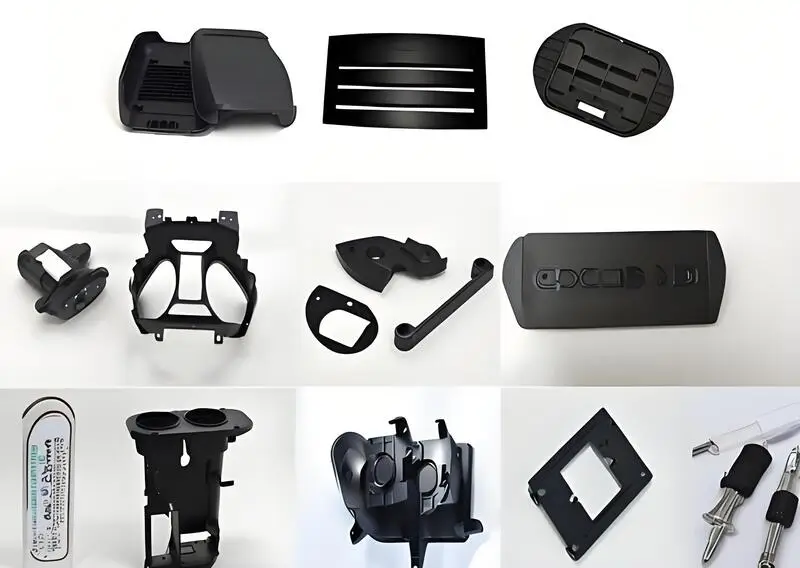
Also, car plastics are recyclable, and recycling saves or eliminates the need to make materials from scratch. This saves energy, unlike other metals and other materials that take more energy to make and process into finished products.
Allows for Further Creativity and Innovation
To stay in the game, manufacturers have to innovate and invent. For example, they’re making self-driving cars. But to do that, they need complex designs that can be made with compatible processes and materials.
Plastic polymers are good for innovation because they’re easy to mold and they’re durable like metal. Plus, they’re machinable (soft) and don’t need extreme machining operations. So, they’re good for making plastic prototypes and physical objects.Flexibility in integrating components .
Because of the nature of plastics themselves, there is flexibility in integrating components made using plastics. For example, it is easy to integrate additives such as UV inhibitors, pigments, etc. into plastics. Integrating components into the manufacturing material helps improve their characteristics, functionality, and aesthetics.
So, it’s easier to make them stronger and more resistant to the sun. Plus, being flexible lets the car industry use plastics for different things. For example, you can use a kind of plastic called glass fiber reinforced polycarbonate to make car bumpers. But you can use regular PC to make headlight lenses. Those are car parts that need to do different things.

Cost-effectiveness The injection mold manufacturing process can be an expensive process due to the cost of the molds. However, it remains a highly scalable process, and its overall cost decreases as manufacturers make more parts.
So, for big production applications, injection molding is good for manufacturers. Injection molding is also a really fast manufacturing process. In most cases, you can make injection molded parts really fast. This high production rate lets car makers make the parts they need fast and easy.
The injection molding machine efficiently produced components through rapid tooling injection molding, meeting tight production deadlines without compromising quality.
Plastic polymers are a great way to save money on making car parts because they’re both good and cheap. They’re cheaper than other materials they can replace. For example, polycarbonate for headlights costs about $1.5/kg, while the glass it replaces costs about $2/kg. That doesn’t even count other good things about it, like how it can take a hit and how long it lasts.
Also, plastics are usually cheaper to make. But the cost depends on how you make them. Most ways to make plastic have a cost to start. But then you can make more plastic for less money. This is why it costs less to make plastic things with injection molding.

Precision and Repeatability
Injection molding is great for making plastic parts with simple shapes and a nice surface finish. When making parts, manufacturers can choose from different surface treatments, like different surface textures – like shiny, rough or dull – that are put on the mold instead of the part. But different plastic materials can also change how the surface looks.
Repeatability is super important in the automotive industry. When you’re making a part, you want to make sure that you can make the same part over and over again. In automotive plastic injection molding, you’re using a metal mold.
So, if you have a good mold, you’re going to get the same part every time. There are a lot of things that can affect injection molding, but if you have a good mold and it’s finished well, injection molding is a very repeatable process.
One of the main reasons automotive manufacturers choose injection molding is because it’s super accurate and repeatable. Automotive molding machines can make parts that meet really tight tolerances.

In the car biz, you gotta be able to make the same part over and over again. With plastic injection molding, you use a tough metal mold, so the part that comes out of the mold is almost always the same.
Design of Complex Shapes
Another good thing about injection molding5 is that it can make parts with complex shapes. Injection molding machines use a process called screw advancement to shoot melted plastic into the mold cavity. This process lets you make parts with a lot of detail and complexity. Plus, you can use injection molding to make parts with holes inside them, like engine intake manifolds.
Diverse Color Options
When it comes to automotive plastic injection molding, it’s easy to change the color of the molded automotive part to match the color scheme of the vehicle. Unlike other processes, injection molding allows you to mix dye with the raw material pellets before you start manufacturing. This gives you solid, consistent coloring without having to paint or color the part after it’s molded.
You can make parts with different textures and colors using injection molding. Unlike other processes, you can mix color with the raw materials before you make the parts. This means you don’t have to color the parts after you make them.

One big reason why injection molding is so popular in automotive manufacturing is because it can work with a lot of different types of plastic. There are a lot of different types of plastic that car manufacturers use for different parts of the car, like ABS, polypropylene, acrylic, acetal, nylon, polycarbonate, and more. And you can get them in a lot of different colors.
Injection molding improves production efficiency in automotive manufacturing.True
Injection molding reduces cycle time and ensures consistent high-quality parts, improving overall production speed and cost-effectiveness.
Injection molding is only suitable for large production runs in the automotive industry.False
Injection molding is versatile and can be used for both small and large production runs, offering cost savings at any scale, particularly with automation and optimized mold designs.
What are the Applications of Injection Molding in the Automotive Industry?
Injection molding plays a crucial role in automotive manufacturing by producing complex, durable parts with precision and efficiency.
Injection molding is widely used in the automotive industry to create parts like dashboards, door panels, and engine components. It ensures high-volume production, reduced material waste, and consistent part quality.

Exterior Parts
All the pretty parts of the car, like the ones that make it look good, are made out of car plastic. The things that keep dirt and mud from splashing up on the car are also car plastic.
Injection molding is a process that’s been around for a long time. It’s used to make a lot of the parts you see on the outside of a car, like fenders, grilles, bumpers, door panels, floor rails, lamp covers, stepped bumpers, headlights, mudguards, and even side mirrors.
Splash guards are a good example of how tough injection molded parts can be. They’re usually made out of rubber or some other tough, flexible material, and they’re there to keep rocks and stuff from hitting the car and to keep water from splashing up on the side of the car.

Underhood Components
Over the past couple of decades or so, a lot of manufacturers have switched to plastics for underhood parts that used to be made of metal. Strong polymers like ABS, nylon6, and PET are common for these applications. But now, manufacturers use injection molding to make parts like cylinder head covers and oil pans. This method is lighter and cheaper than metal parts. Interior Parts .
All the stuff inside cars, like the parts you touch and the parts you look at, are made by injection molding. That means things like the dashboard, the door handles, the glove box, the air vents, the headliner, the center console, and the little compartments in the dashboard. And all the fancy molds for making fancy car parts are made the same way.
Interior Parts
All automotive interiors, including instrument components, interior surfaces, dashboard panels, door handles, glove boxes, vents, headliners, instrument panels, door handles, center consoles, and dashboard compartments are examples of injection molding products. In addition, all decorative automotive molds for luxury cars are also manufactured using the same manufacturing technology.
Injection molding improves the efficiency of automotive production.True
Injection molding enables high-volume production of complex automotive parts with reduced lead times and material waste.
Injection molding is only used for plastic parts in automotive manufacturing.False
Injection molding is primarily used for plastics, but it can also be applied to metals and composites for certain automotive components.
Conclusion
Injection molding is used in malny industries for mass production. The cost per part is low once you pay for the mods and tooling.injection molding automotive parts is a good way for car companies to make a lot of car parts fast and make them complicated. Car plastics are replacing expensive metal parts because they can be made and they work good.
-
Explore how Polypropylene’s chemical and heat resistance makes it ideal for intricate automotive parts, enhancing durability and performance. ↩
-
Discover Polyurethane’s unique properties like insulation and elasticity, making it perfect for noise and heat shielding in vehicles. ↩
-
Learn about PVC’s flexibility and heat resistance, crucial for manufacturing durable and cost-effective automotive interior parts. ↩
-
Explore how thermoplastic injection molding revolutionizes automotive manufacturing with its cost-effectiveness, speed, and versatility. ↩
-
Explore how injection molding revolutionizes manufacturing with its speed, scalability, and cost-effectiveness, making it ideal for large-scale production. ↩
-
Learn aboutPA6, PA66, PA12, and PA1010 are four kinds of nylon injection molding process introduction : NylonPolyamide (PA for short) is a plastic composed of polyamide resins. ↩



